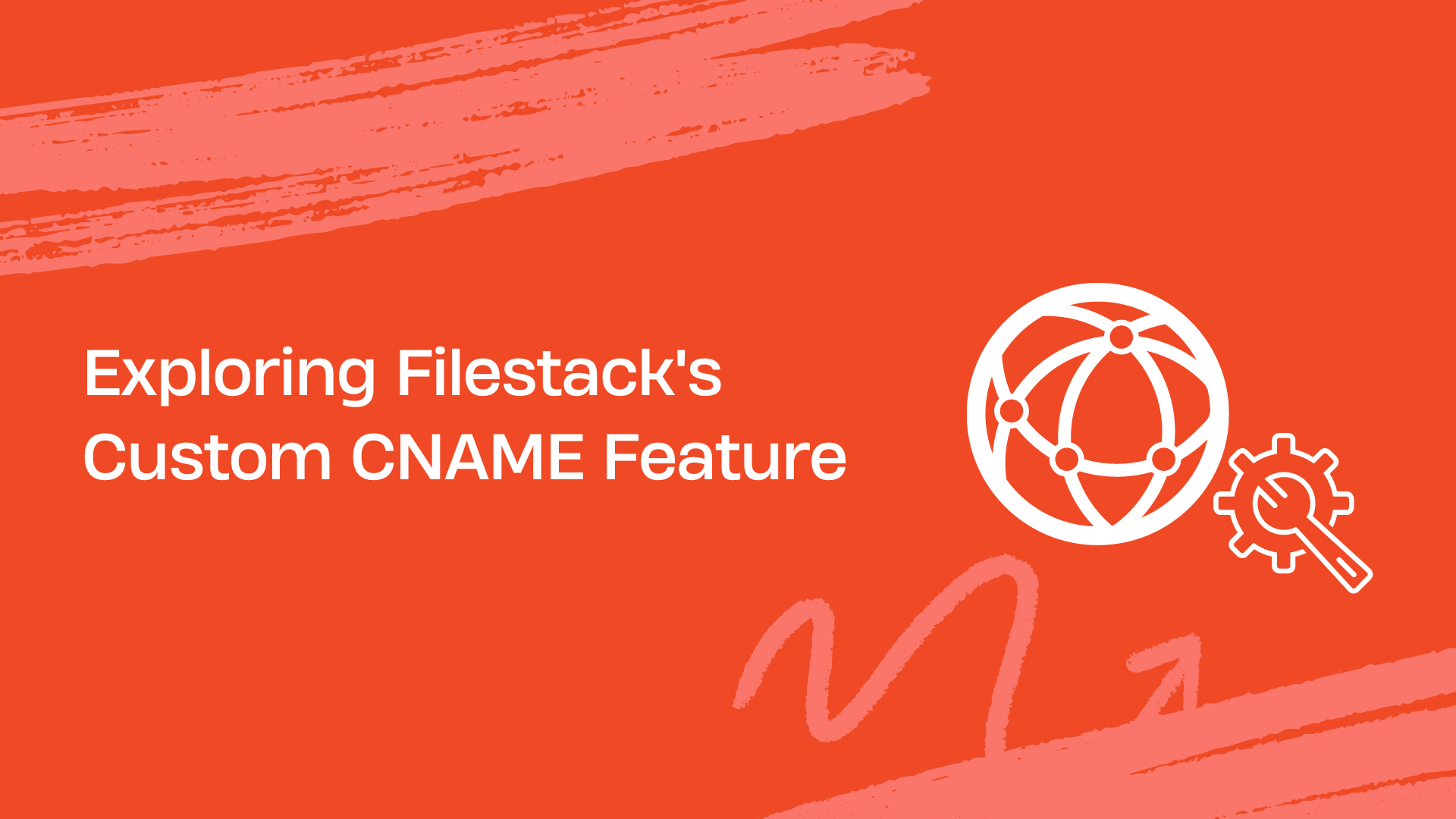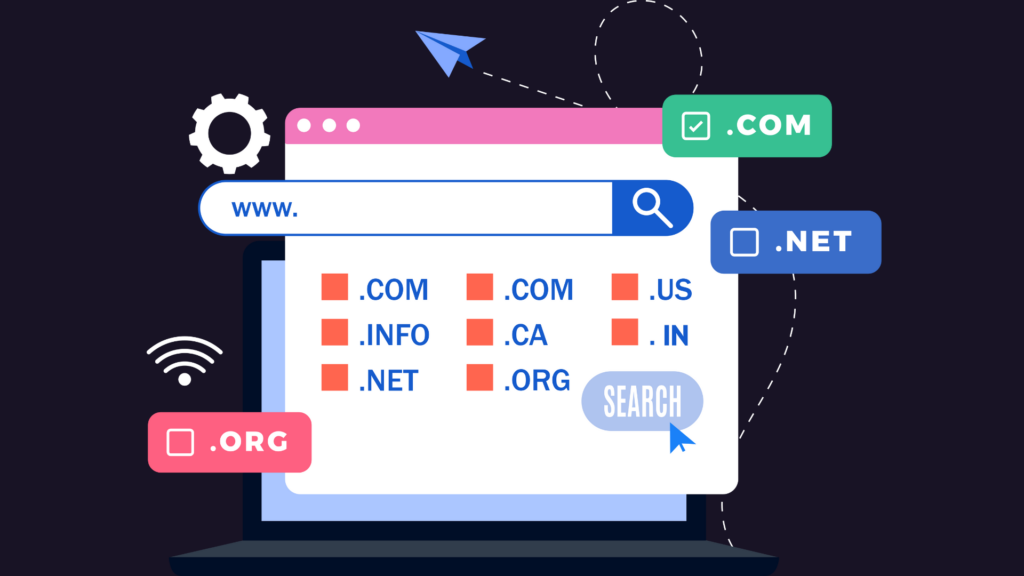Have you ever wanted to make the web links you share look more like your brand? Filestack’s Custom CNAME feature lets you do just that. This blog will show you why this feature is important and how to use it step by step.
In today’s online world, making your brand stand out is important. One way to do that is by customizing the links you share. By default, most file-sharing services give you generic-looking links. But with Filestack’s Custom CNAME feature, you can change these links to include your brand name. This can help people recognize and trust your brand more easily.
In this blog, we’ll explain why customizing your links is important and how Filestack’s Custom CNAME feature can help. We’ll also give you simple instructions on how to set it up for your brand. Let’s read this blog till the end.
What is a custom CNAME?
A custom CNAME (Canonical Name) is a feature that lets you make your web links look like they belong to your brand. Instead of using the default links provided by a service, you can use your own website’s name in the link.
For example, if you use a file-sharing service, you can change a link like “https://files.example.com/document123” to “https://docs.yourcompany.com/document123”. These links look more professional and help people recognize your brand.
👉Businesses often use custom CNAMEs to keep their branding consistent across their websites and online services.
What are the benefits of custom CNAME?
Custom CNAMEs have these benefits:
✔️They let you use your website name in URLs. As a result, making your links look more like your brand.
✔️You can keep your branding the same across all your online content, like file-sharing links.
✔️People tend to trust links that look more official. Moreover, it can get you more clicks and engagement.
✔️You can switch services or hosts without changing links, as long as the new service supports custom CNAMEs.
✔️Some services let you see how your links are doing. Therefore, you can track what people are clicking on.
How do you implement custom CNAME via Filestack?
To use a custom CNAME with Filestack, follow five simple steps:
👉Make sure you have the Custom CNAME feature enabled for your Filestack account.
👉Add specific DNS records for Filestack services to your domain settings.
👉Replace the default Filestack domain (`cdn.filestackcontent.com`) with your custom subdomain (`cdn.fs.YOUR-FQDN`) in your file URLs.
👉Set security policies in cookies instead of URL paths for better control over who can access your files.
👉If you use Filestack’s API, configure it to use your custom CNAME for all requests. This ensures consistency in your branding and access control.
The custom CNAME feature works for sending and receiving data, like requests to API endpoints. For example, you can set up the JavaScript API client to use your custom CNAME for all its requests.
const options = { cname: 'fs.mydomain.com' };
const client = filestack.init('apikey', options);
What are the real-life use cases of custom?
Custom CNAMEs have practical uses in various industries:
1. Branding
They help companies reinforce their brand by using their domain name in file links. For example, “files.abccorp.com” looks more professional than generic links.
2. User-Friendly Links
They make links easier to recognize and trust. For instance, an online store can use custom CNAMEs for product images. As a result, ensuring customers feel comfortable clicking on them.
3. Security
Custom CNAMEs can control file access by setting security policies in cookies, which is useful for protecting sensitive documents.
4. Consistent Branding
They ensure that a company’s branding remains the same across different platforms and services. For example, a media company can use them for video files. It can help them maintain branding consistency online.
What are the limitations when using Custom CNAME?
When using Custom CNAMEs, remember:
Setting up Custom CNAMEs involves changing DNS settings. This practice might be tricky if you’re not familiar with it.
Ensure your SSL certificate covers the custom domain to avoid security issues.
Not all services may support Custom CNAMEs. As a result, limiting where you can use them.
Using Custom CNAMEs ties you to Filestack; switching providers means updating all your links. However, you can always rely on Filestack as it is an efficient and reliable solution.
Custom CNAME functionality may cost extra, depending on your Filestack plan.
Custom CNAMEs might slightly slow down file access due to extra DNS lookups.
While Custom CNAMEs offer some control over file access, it may not be enough for sensitive files.
👉Despite these limitations, Custom CNAMEs are useful for improving branding and user experience with file-sharing links.
Conclusion
Filestack‘s Custom CNAME feature makes your links look more like your brand. It can help people trust your links and recognize your brand easily. However, setting it up can be tricky, and you need to ensure your SSL certificate covers your custom domain.
Using Custom CNAMEs ties you to Filestack, so you’ll need to update all your links if you decide to switch providers. Also, depending on your Filestack plan, you may need to pay extra for this feature.
Custom CNAMEs are useful for improving branding and user experience with file-sharing links. However, it’s important to consider the limitations and costs involved.
FAQs
What is the best tool to implement custom CNAME?
Filestack is the best tool for custom CNAME implementation because it’s easy to use and has clear instructions.
How does Filestack implement custom CNAME?
Filestack lets users add their own domain to Filestack’s SSL certificate and set up DNS records for their domain to use custom CNAMEs.
How does Custom CNAME benefit businesses?
Custom CNAMEs help businesses by making their links look more like their brand. This can make people trust the links more. They also help keep branding consistent across different services.
Is Custom CNAME a standard feature in all Filestack plans?
Not all Filestack plans include Custom CNAME as a standard feature. It might be offered as an extra feature that you have to pay more for.
Can Custom CNAME be used for all types of files?
You can use Custom CNAME for all types of files if the file-sharing service you’re using allows you to set it up.
Sign Up for free at Filestack Today – Utilize the Custom CNAME Feature Now!
Ayesha Zahra is a Geo Informatics Engineer with hands-on experience in web development (both frontend & backend). Also, she is a technical writer, a passionate programmer, and a video editor. She is always looking for opportunities to excel in her skills & build a strong career.
Read More →



